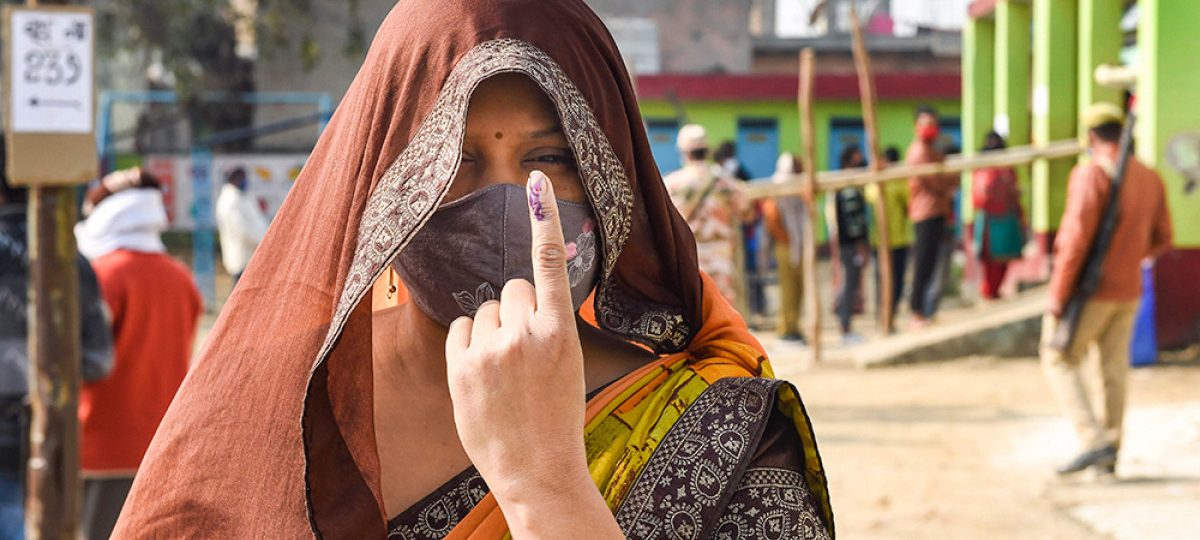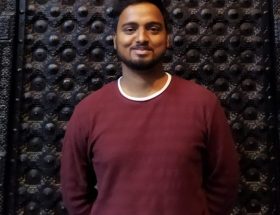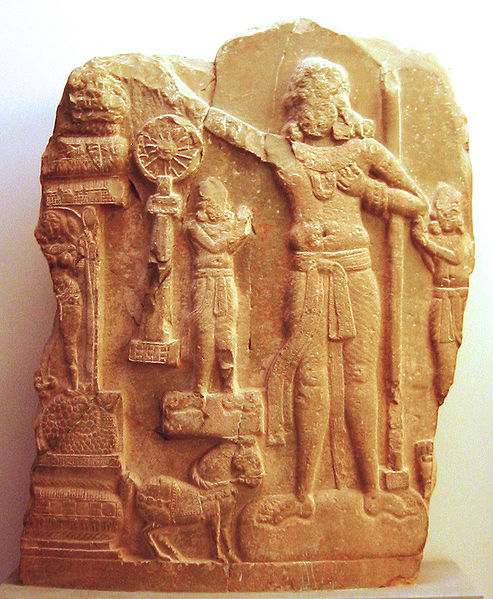Nirban Ray & Om Prakash Mahato
There have been mainly two approaches by means of which the politics of North India in general and Uttar Pradesh in particular is analyzed. These two approaches or analysis, although based on different methodologies or diverse case studies, their fundamental aim is to understand and explore the politics of North India and through this they finally aspire to articulate the shifts, changes and patterns of Indian politics – if there is any. Christophe Jaffrelot, by using the concept of “silent revolution” and Yogendra Yadav, by using the concept of “democratic upsurge” have attempted to explore, understand and articulate changes, shifts and patterns of politics in North India.
The Silent Revolution
In ‘India’s Silent Revolution: The Rise of the Lower Castes in North India’, Jaffrelot attempts to explain why North India lagged behind in terms of including new social groups in the political system? In order to explain this, Jaffrelot talks about two ages of Indian democracy. But, before going into these two ages, Jaffrelot points out that, since 1947 India has been witnessing political democracy without a social democracy – which Dr. Ambedkar had heavily emphasized in the Constituent assembly debates.
The first age for Jaffrelot, is that of the dominance of the Congress Party until the late 1960s. During that time, the numerical strength of higher castes in north India (though nowhere near a majority of the population) allowed a largely high-caste Congress Party to mobilize voters and win elections without paying much attention to lower-caste voters, whose social superiors roped them in as clients (pp. 8-9). The second age saw the mobilization of lower-caste groups against the Congress in north India. This took two, often opposite forms: through “kisan [peasant] politics” and “quota politics.” The former aimed to woo wealthy rural castes with suitably tailored “land reforms” (a little but not too much) and agricultural perks. “Quota politics” promised jobs and privileges to lower- status castes to rectify their status. Out of this political chemistry came the expression “Other Backward Castes” of OBCs – castes that were not “forward” but neither were they “untouchable” (or “Scheduled Castes”).
But, things started to change fast by the late 1990s as the Mandal Commission report was being implemented. Both the Congress Party and the rival Bharatiya Janata Party (BJP) had to include lower castes prominently in their election line- ups or form alliances with parties devoted heavily to the interests of a particular caste. Jaffrelot rightly questions his own emphasis on “OBC” as a useful category: “one wonders whether the OBCs really constitute a social and political category” (p. 386)
And, for Jaffrelot this is the moment of a “silent revolution” of Indian politics when the lower castes increasingly capture political office and use political power to alter social equations in the countryside. For instance, Jaffrelot extensively talks about the rise of Bahujan Samaj Party (BSP) and the works of Mayawati in Uttar Pradesh when she became Chief Minister of the state, that also four times.
However, Jaffrelot also highlights here a peculiar event of the revolution- that is, the story of the rise of Yadavs in Uttar Pradesh. For him, the Yadavs or the Shudras as such have risen in Uttar Pradesh through a peculiar phenomenon. That is, the Shudras rose by ‘sanskritizing’ themselves to become and be accepted by the Upper castes. A “Black Skin, White Mask” moment for the silent revolution, which in later time -which is now- has become so extravagantly dominant that it seeks to change the course of Indian politics forever.
The Democratic Upsurge
Yogendra Yadav, while analyzing decades of electoral politics argues that the last decade of Indian politics represents the full unfolding of the contradiction between the logic of political equality and that of social inequality, something that Ambedkar had warned against in the Constitution assembly itself. However, it didn’t stop Indian politics from functioning. In fact, Yadav talks about three phases of Indian politics which finally culminates in the democratic upsurge in Indian politics.
The first phase of the famous ‘Congress system’, is for Yadav, characterized by single-party dominance and lasted for the first two decades after independence. The second phase, which may be called the ‘Congress-Opposition system’, was still characterized by the one-party salience, though no longer dominance, of the Congress. Despite remaining out of power very often, the Congress nonetheless retained a noticeable presence in the party system, not only because it continued to command greater popular support than any opposition party, but mostly because it was the core around which the party system was structured. The third phase, inaugurated by the assembly elections of 1993-95, definitely signals a move towards a competitive multi-party system which can no longer be defined with reference to the Congress. While it may be too early to expect a fully worked out picture of what the post-Congress system would look like, a comparison of the 1993-95 elections with elections in the previous phases of Indian politics, asserts Yadav, brings out some of the enduring structural changes which have redefined the terrain of electoral politics. (Yadav, 96)
The period since 1989 is best characterized for Yadav, as a new electoral system, the third one since the inauguration of democratic elections in 1952. In this substantive sense the first four general elections from 1952 to 1967 fall under the first election system. The one party dominance of the Congress meant that the elections in this period were not seriously competitive.
But, the 1967 election had already signaled a transition, for the monopoly of the Congress and the savarna castes was challenged for the first time in North India. The process had started much earlier in the south. This movement towards the new system, argues Yadav, was triggered off by the first democratic upsurge in the late 1960s. The upsurge brought a great many new entrants from the ‘middle’ castes or the OBCs into the game of electoral politics and turned it truly competitive. Congress was no longer the single dominant party, but throughout the 1970s and 1980s it nonetheless continued to be the natural party of governance, the pole around which electoral competition was organized. (Yadav, 1996)
The decisive stimulus for change however, asserts Yadav, came between 1989 and 1991 in what was christened as the three M of Indian politics: Mandal, Mandir and Market. The almost simultaneous and sudden occurrence of these three events – the implementation of the Mandal Commission’s recommendations for OBC reservations, the BJP’s Rath Yatra that catapulted the Babri masjid dispute into national prominence, and the forex crisis, leading to the implementation of the first phase of IMF sponsored package of ‘liberalization’ – all together created an extraordinary opportunity for reworking the established political alignments. All the three offered the possibility of creating a new cleavage that cut across the established cleavage structure and thus engaging in a new kind of political mobilization.(Yadav,1996)
And, this is the democratic upsurge Yadav talks about – that is, the Shudras or the previously excluded caste groups are now increasingly entering the arena of politics in India. However, interestingly points out Yadav, that, as the Shudra participation has increased in the last ten years, the socially and the economically privileged sections of society or the upper castes have recorded decreasing levels of political participation. (Yadav, 1996)
But, how did the democratic upsurge take place? For Yadav, the raw narratives of social justice articulated by a Kanshi Ram or a Laloo Prasad Yadav achieved what Lohia’s sophisticated philosophy of history failed to do three decades ago, namely, to make it respectable to talk about caste in the public-political domain. The emergence of ‘social justice’ as a rubric to talk about caste equity, political representation of castes and communities and issues of communitarian self-respect and identity is a distinct achievement of this upsurge.
Conclusion
Both the concepts- the silent revolution and the democratic upsurge, thus explain how the lower castes have risen over time, particularly after the implementation of the recommendations of the Mandal commission. However, one important question that arises here is that – if there were truly a silent revolution as Jaffrelot suggests or a democratic upsurge as Yadav explains then, why is there a sudden decline of the lower caste politics in Uttar Pradesh? Also, what explains the exponential rise of BJP in Uttar Pradesh and the downfall of lower caste parties like BSP in 2017 and 2022 Uttar Pradesh state elections? We argue here that, both Jaffrelot and Yadav failed to see that, in a caste ridden society and polity like that of Uttar Pradesh, political representation, political power and political offices are not enough to change, transgress, and shift the fundamental structure of politics, unless and until there occurs a fundamental change in the very foundational functioning of the caste system. And, this never happened. Although, in its tenure the BSP and Mayawati implemented various schemes or carried out many pro-dalit or pro-lower caste politics, at the end of the day, there had not been any attempt to build institutions or structures which would fundamentally attack the functions of caste, or in a more profound way, would talk about annihilation of caste.
And, for the rise of BJP, as Jaffrelot rightly pointed out that the Shudras became politically OBC’s only after accepting themselves as Hindus and assimilating themselves in the Hindu culture. Therefore, there is nothing to be surprised of if the Shudras now politically align themselves with the BJP- the only party in India, which claims to be the only party for the Hindus in India. This finally, we argue, explains the extravagant rise of the BJP in Uttar Pradesh and at the same time, the downfall of the lower caste politics.
~~~
Nirban Ray is a PhD Research Scholar at Centre For Political Studies, Jawaharlal Nehru University, New Delhi.
Om Prakash Mahato is a PhD Research Scholar at Centre For Political Studies, Jawaharlal Nehru University, New Delhi.
Image courtesy: the internet.









